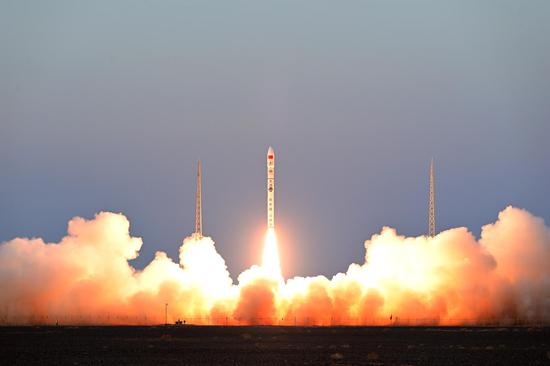Shanghai researchers have devised a revolutionary, non-invasive method to monitor blood glucose, allowing for accurate blood glucose level measurements by simply placing a palm on a monitoring device, Shanghai Ruijin Hospital said on Wednesday.
Medical experts said such an innovative monitoring way, which eliminates the need for painful finger pricks or blood draws associated with traditional glucose monitoring methods, may significantly enhance patients' compliance to blood glucose monitoring regularly and improve their quality of life.
Diabetes is a serious public health problem, afflicting more than 500 million individuals around the world. The prevalence of diabetes among adults in China is as high as 12 percent, according to the latest national data from last year.
Effective and regular blood glucose monitoring is the foundation of diabetes management, and the common blood glucose monitoring methods so far require invading the skin, which may cause problems, such as pain and blood infection, and pose challenges for the compliance of patients with long-term blood glucose monitoring.
Non-invasive blood glucose detection technology has been at the frontier of research over the past decades, but faces challenges in accuracy and versatility.
In this research, the team utilized optical coherence tomography (OCT) technology to determine the distribution range of human epidermal thickness, enabling the targeted development of the non-invasive blood glucose monitoring technique based on multiple μ-spatially offset Raman spectroscopy (mμSORS).
This new technology offers high spatial resolution, enabling simultaneous detection of subcutaneous tissues at different depths while effectively reducing background signal interference from the epidermis and thus enhancing glucose monitoring accuracy, said the researchers.
"In the first phase of the study, we determined that the optimal detection depth of non-invasive blood glucose monitoring comes from or below the dermal-epidermal junction, where there are rich capillaries and interstitial fluid carrying information about blood glucose," said Wang Weiqing, a leading researcher on the team and a professor from the National Clinical Research Center for Metabolic Diseases at Ruijin Hospital Affiliated with Shanghai Jiao Tong University School of Medicine.
"Also, we confirmed that mμSOLS can effectively collect human blood glucose-related Raman spectral signals in a completely non-invasive manner. And analytical algorithm showed that the spectra of the extracted main factors are found to be highly consistent with the Raman spectra of glucose," she said.
In the second phase of the research, the team validated the accuracy and universality of the technology through clinical studies involving 200 diabetes patients and 30 healthy individuals. Their study confirmed that the average absolute error between mμSORS non-invasive blood glucose readings and venous blood glucose readings was 14.6 percent, with 99.4 percent of the non-invasive readings falling within the acceptable range regarding clinical errors.
"Another advantage is that the technology doesn't require calibration for different individuals, and is suitable for diverse populations across various age groups, skin colors, and body shapes, laying foundation for future large-scale applications," Wang said.
A paper about the study, a joint effort by researchers from the National Clinical Research Center for Metabolic Diseases at Ruijin Hospital, the Medical Chip Research Institute of Ruijin Hospital, and PhoVie, a Shanghai-based enterprise focusing on combining integrated circuit chip technology and biotechnology, was published on the website of Nature Metabolism on Wednesday.


















































 京公網(wǎng)安備 11010202009201號
京公網(wǎng)安備 11010202009201號